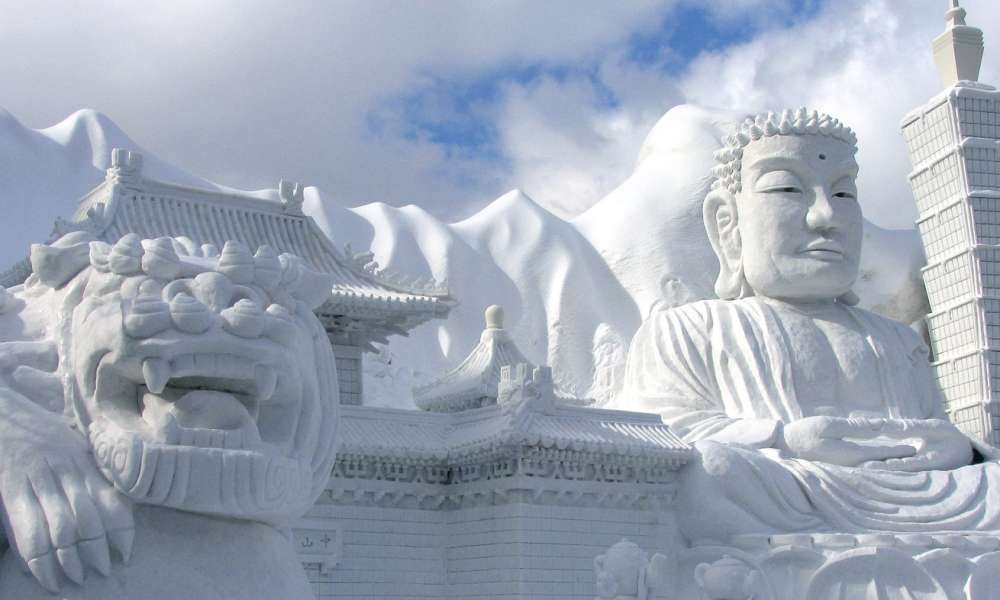
Simon Richmond takes you around Hokkaido's snow and ice festivals.
Many British children rush outside at the first decent snowfall to make snowmen, only to watch them melt away a few days later. Just imagine what they could create if they lived on Japan’s far northern island of Hokkaidō where the white stuff starts falling in November and doesn’t stop for months and where winter temperatures regularly dip below zero degrees Celcius. A giant scale model of a castle, perhaps, a huge whale, or an enormous snow slide?
Such are the sculptures crafted from some 30,000 tons of snow for the annual Yuki Matsuri (Snow Festival) held in Sapporo, Hokkaidō’s capital city. Japan’s most famous snow festival has its origins in the winter of 1950, when six small snow statues were created by high-school children in Ōdōri-kōen, the city’s main park. The idea caught on and by 1955 the Self Defence Force (the Japanese military) was pitching in to help build the gigantic snow sculptures the festival has since become famous for.
Spread across three sites (Ōdōri-kōen, Susukino and Sapporo Tsudome), the festival now includes an international snow sculpture competition and other events, such as snowboard jumping, nightly music performances and food stalls. Arrive one week in advance and you’ll be able to see the statues being made and even take part in the construction, since at least one giant statue in Ōdōri-kōen is a community effort – all you need do is turn up and offer your services.
Don’t worry if Sapporo is booked up during the festival as there are several other similar events around Hokkaidō that take place between late January and the end of March. School children in the attractive, historic port of Otaru, 40km northwest of Sapporo, have been crafting snow sculptures since 1935 with a break only during WWII. The displays here are along the Otaru Unga, a portside canal lined with heritage-listed brick warehouses.
Shikotsu-ko Onsen, 36km south of Sapporo, lies in a national park beside the beautiful caldera Lake Shikotsu. The lake stays ice free during the winter, so in compensation, the tiny hot spring resort hosts the impressive Chitose-Shikotsu-ko Ice Festival. Large structures, caves and sculptures are made from ice and are best viewed at night when illuminated in a rainbow of colours.
A similar ice sculpture event is held at Sōunkyō Onsen, 70km east of the central Hokkaidō city of Asahikawa, which itself hosts a Winter Festival, for five days in the second week of February, that is as spectacular as Sapporo’s. The giant stage for the festival’s opening and closing events holds the world record for the largest snow sculpture.
Hard core lovers of chill should aim for the fishing port of Abashiri, 350km northeast of Sapporo, where in the depths of winter packs of drift ice float across the Sea of Okhotsk. Fun winter activities, such as taking a snowmobile for a spin, happen on frozen Abashiri Lake. This site, along with the quay at Abashiri Port, is also the location for the town’s snow festival, which takes place in the second week of February.
Quick Guide
Sapporo’s Yuki Matsuri happens for around a week at the beginning of February. Two million visitors flood into Sapporo during the matsuri so booking transport and accommodation well ahead of time is essential. If you can’t find anywhere to stay, frequent train links make it possible to base yourself in, say, Otaru (which has its own snow festival) and travel into Sapporo for the day.


























































